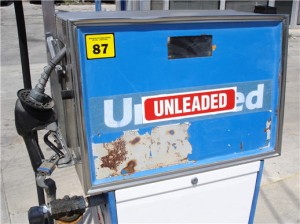19 Jun WILL GAS HIT $5 A GALLON?
 How about $6? $7? When will we see relief?
How about $6? $7? When will we see relief?
How high will pump prices go this summer? Many analysts think we will pay $5 a gallon for gas this summer – and some think gas will cost much more than that. On April 20, the AAA’s Daily Fuel Gauge Report had regular unleaded averaging more than $4 per gallon in six states – Hawaii, California, Alaska, Connecticut, Illinois and New York.1
Is collusion behind this, or simple economics? While the Justice Department has announced a task force to investigate fraud and manipulation in the oil industry, most economists see this as little more than a public relations move coming out of the Obama administration – the U.S. had no way to control global price pressures on oil in 1979 and it has no way to control the price of the commodity in 2011.
One of the biggest influences on oil and gas prices can be found in your wallet: the U.S. dollar.
Commodities are priced in U.S. dollars on the world market, and we have a weak dollar right now. A feeble dollar means we have to pay more to buy foreign oil. It also means foreign currencies are able to buy more of the commodity for the same amount of money.
If foreign nations take advantage of a weak dollar and buy more oil, you’ve got rising global demand. When demand rises, oil prices are poised to rise. Since oil prices are set in U.S. dollars, we feel the impact of price spikes in a way that nations using other currencies may not.
Global Hunter Securities economist Richard Hastings attributes about one-third of pump prices to the weak buck. He recently raised eyebrows by stating to CNBC.com that gas could hit $6.50 a gallon this summer given high demand and the potential impact of “one or two hurricanes”.2
Emerging markets exert another big influence on oil and gas prices. Tremendous economic growth in China, India and other developing nations means they have a sustained demand for oil and gasoline, and it is not declining. Oil and gasoline prices are also subsidized in some emerging-market nations. This artificially breeds high demand.
Factor in recent political unrest in some oil-exporting nations, and you have the core reasons for $4 gas down the street.
One analyst sees potential for a new recession. Craig Johnson, president of the retail forecast firm Customer Growth Partners, just noted to CNBC that consumers are currently spending more than 6% of their income on energy costs. He cites that percentage as a “tipping point”, noting that five of the six recessions since 1970 have happened when personal consumption expenditures (PCE) for energy costs surpassed 6%. While rising fuel prices by themselves may not seem like a recession trigger, Johnson also mentioned the simultaneous jump in food prices – they are up 6.5% since the end of 2010. He estimates that consumers now spend about 15% of their incomes on food and energy prices.3
What would bring gas prices down? Well, boycotting the gas stations in your region for a day is not likely to do the trick. Relief might appear as follows: high oil prices often encourage oil producers to increase supply, as they can make even more profit from sustained demand. But that can lead to a glut – too much supply at prices too high, a circumstance in which prices would be poised to pull back. In fact, Saudi Arabian Oil Minister Ali Naimi recently commented that the world oil market was oversupplied.4
Another factor is our own consumer demand. You are hearing stories about people only driving on weekdays, or foregoing trips or cycling or taking the bus to work. Affirming this phenomenon, March credit card data from MasterCard SpendingPulse showed U.S. retail gasoline expenditures down 2.1% year-over-year.5
Tom Kloza, who is chief analyst for the Oil Price Information Service, recently shared his belief on NPR that prices will “correct or ease back a little bit and we’ll [see] a driving season where we pay something between $3.25 and $3.75 for gasoline” with moderating demand and a slightly less heated commodities market. Let’s hope he’s right.5
Kevin M. Nast is a Financial Adviser and the President of NastGroup Financial in Northville, MI 48167. He may be reached at nastgroupfinancial.com or 248.347.1888. Kevin also services clients in Plymouth, Belleville, Brighton, Livonia, Canton and the surrounding metro Detroit area as well as 13 additional states across the US.
This material was prepared by Peter Montoya Inc., and does not necessarily represent the views of the presenting party, nor their affiliates. This information should not be construed as investment, tax or legal advice. The publisher is not engaged in rendering legal, accounting or other professional services. All information is believed to be from reliable sources; however, we make no representation as to its completeness or accuracy. If assistance or further information is needed, the reader is advised to engage the services of a competent professional.
LD40239-04/11
Citations.
1 – cnbc.com [4/20/11]
2 – cnbc.com [4/20/11]
3 – cnbc.com [4/21/11]
4 – abcnews.go.com [4/18/11]
5 – npr.org [4/21/11]
6 –montoyaregistry.com [4/24/11]




Sorry, the comment form is closed at this time.